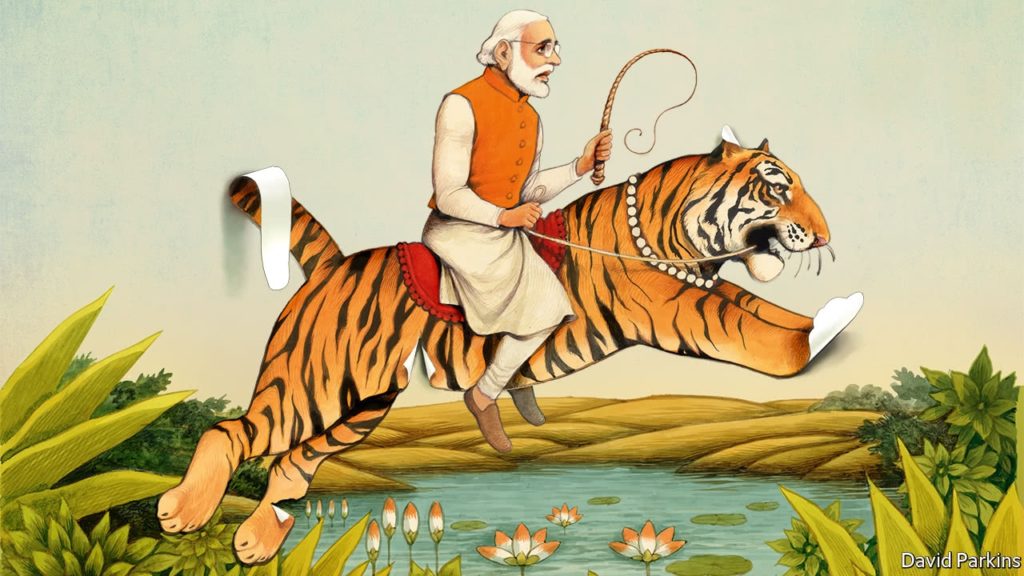
Modi’s India – Riding a Paper Tiger According to The Economist Magazine
The Economist weekly newspaper published a cover story on “Modi’s India” and on the frontispiece, Modi is shown riding a paper tiger. The Economist is a respectable magazine and known for the stands it takes on issues. The story explores working of Modi and his governance and creates a very pessimistic view of what is happening in India. We need such impartial stories to know what is going on.
The international media is taking note of current events in India. In the past, the global media hadn’t had much exposure to Indian realities, particularly, about the practice of untouchability and human rights violations in the caste-based social order. This began to change after Khairlanji massacre when the BBC took note of it and published the gruesome massacre of the Dalits in Khairlanji. The story appeared in the Washington Post, in the Chinese media, and in Pakistan media. It appeared on the radio. It was the turning point in the history of the anti-caste movement that the plights of the Dalits received international attention.
It is clear that nothing can be done sub rosa now that the international media is watching. It is not that the international media cannot be managed, but there are limits to manage media which cannot be curbed through national legislations. Free and impartial media is a watchdog of the democracy. Media has an important role to play as it is the media between the citizens and the Government. It communicates both the ways.
Sadly, Indian media has not come up with a critical assessment of Modi. The Economist also confirms the fact that most of the Indian media is dominated by the cronies of Modi and if the media tries to enjoy a little freedom, it is gagged.
The media cannot be gagged, the print and electronic media, maybe, but it is impossible to gag all the media. Social media has emerged as one of the important media to communicate. It has also become a net aggregator of opinions of the people. The social media is surely going to play an important role in creating opinions and shaping perceptions. However, “the crucible effect” cannot be discounted in India. Arthur Miller’s great play The Crucible brings out how perceptions can be distorted. People can be conditioned to think in particular ways through the images and stories bombarded on them.
This is what is happening in India. The media is gas lighting (another wonderful drama that shows how the perceptions can be distorted) the Indian citizens through stories of development, progress, and India’s rising power abroad. Judging by the picture metaphor of the Economist, we are either riding the paper tiger or hallucinating that we are riding an actual tiger. Looking at the current Indian tiger, if the tiger is the metaphor of the day, it is a bleeding and angry tiger. The Indian tiger is ferocious and agitating. Modi cannot ride it without healing it, without making it unified, without making it stronger and healthy, without feeding it properly. The real Indian tiger (the vast population of lower castes in India) do not know that they are the tiger and is rode by the crafty upper castes who conditioned the tiger to think like a cat. If this tiger realises its tiger-ness and real strength, it will turn back and might devour its oppressors.
Author – Mangesh Dahiwale, Human Rights Activist
Image Credit – The Economist



Yes, Modi is riding a sick, wounded and hungry Tiger beating it with thorny hunter to make it move, and the outcome may be any one of the following, the tiger may 1. die due to sickness, torture and hunger, 2.Unable to bear the torture due to natural instinct natural ferociousness of the Tiger is arisen and the hidden strength in all the muscles is accumulated, suddenly revolt and kill the oppressors.